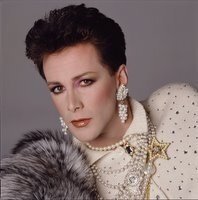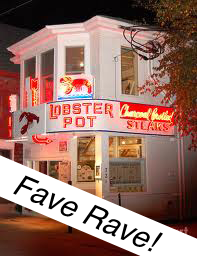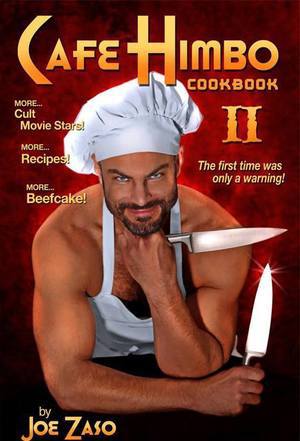A New Sybil Bruncheon's "WHO'Z DAT?"... NED SPARKS (November 19, 1883 – April 3, 1957)
/Darlings! Mummie has made a decision! After reading dozens of posts and having hundreds of conversations with well-meaning folks who just don't know about the great CHARACTER actors who gave films the depth and genius that surrounded and supported the so-called "stars", I am going to post a regular, special entry called SYBIL'S "WHO'Z DAT?"....there'll be photos and a mini-bio, and the next time you see one of those familiar, fabulous faces that you just "can't quite place".......well, maybe these posts will help. Some of these actors worked more, had longer and broader careers, and ended up happier, more loved, and even wealthier than the "stars" that the public "worships". (I think there may be a metaphor in that! What do you think???). Well, while you’re mulling it over, that ruckus you here in Mummie’s foyer is none other than the irreplaceable NED SPARKS (November 19, 1883 – April 3, 1957).
Known for being a nasal-toned, deadpan, cigar chewing comedian, Sparks was born Edward Arthur Sparkman in Guelph, Ontario, Canada. He left home at age 16 and attempted to work as a gold prospector in the Klondike Gold Rush. After running out of money, he quickly abandoned the hard work and cold, and took advantage of his mellifluous tenor voice to sing in saloons, carnivals, tent theatricals, medicine shows, and the like, where he was billed as the “Singer of Sweet Southern Songs,” performing in a straw hat, bare feet and short pants. At age 19, he briefly attended a Toronto seminary but left almost immediately to work for the railroad and then in a theater in Toronto. In 1907, he left for New York City to try his hand in the Broadway theatre, where he appeared in his first show in 1912. While working on Broadway, Sparks developed his trademark deadpan expression while portraying the role of a desk clerk in his first film LITTLE MISS BROWN (1915). His successes both in the film and onstage soon caught the attention of MGM’s Louis B. Mayer who signed Sparks to a six picture deal in silent films. Off the stage, Sparks stood up for better working conditions for his fellow actors. He deplored the low wages, abuse and demeaning treatment of actors, joining in New York’s theatre strike in 1919 against the big producers for better wages. These actions led to his being blacklisted for months. His career took a short tumble for participating, but he became one of the founders of the Actors Equity Union. Sparks returned to the stage by 1920, appearing with such comic performers as Robert Woolsey, Leon Errol, Joe E. Brown, and Harry Langdon. In October 1920, Sparks, Brown, Langdon, and Frank Fay starred in JIM JAM JEMS, a musical pastime proclaimed for its “exhilarating humor” and “enjoyable entertainment.” The show sold out four weeks in advance.
In 1923, Sparks moved West. He acted in shorts that fall, and performed with the Lambs’ Club at the Hollywood Bowl in the summer of 1924. Joining the Masquers’ Club, filmdom’s version of the Lambs’, Sparks performed in REVELS with director Fred Niblo, and comedians Lloyd Hamilton and Roscoe Arbuckle. In the 1920s, his silent-movie career had been going full steam, but with the advent of sound, his “talkie” debut in THE BIG NOISE (1928) was a big hit. It was Ned's cynical delivery, nasal tone, raspy whines, and sour disposition that clinched his iconic film niche. The Hollywood Filmograph called him, “undeniably, the shining light of the cinema.” When Sparks signed a long-term contract with RKO in early 1930, it stipulated that he could sit in on story conferences and make suggestions regarding comedy situations and lines in both the Masquers Club two-reelers and features in which he appeared. Thanks to his squawky voice and gaunt, glaring face Sparks finally came into his own. It was during this time that he secretly married Mercedes Caballero, sister of Charles Caballero, head of Fox Studios’ Purchasing Department, on Oct. 10, 1930, keeping quiet for months about it. They seldom appeared in public, but Sparks was never a social butterfly away from work anyway.
The marriage soured by 1933, with Mercedes suing for cash, claiming that he was making $6,000 a month. Sparks countersued, claiming Mercedes’ dog bit him and his friends, and that the dog chased him out of bed. He claimed she thought more of the dog than him. In early December, Sparks was ordered to pay her $200 a month. (Their acrimonious suits and countersuits back and forth continued to plague them both through to 1936 and strained their finances.)
Throughout the 1930s, Sparks became known for his dour-faced, sarcastic, cigar-chomping characters. His appearances in big 1930s musicals like 42ND STREET , GOLD DIGGERS OF 1933, and GOING HOLLYWOOD, all released in 1933(!) cemented his reputation as the beloved “grouchy sidekick”. He also appeared in 1933 in ALICE IN WONDERLAND as the hookah-smoking caterpillar with Gary Cooper, Cary Grant, Edna May Oliver, May Robson, W.C. Fields, and Edward Everett Horton. Fellow comedians like Jack Oakie called him the greatest scene stealer, noting, “Ned was deadly.” In 1934, he appeared with Claudette Colbert in IMITATION OF LIFE, one of his few dramas.
He became so associated with the type that, in 1936, The New York Times reported that Sparks had his face insured for $100,000 with Lloyd's of London. The market agreed to pay the sum to any photographer who could capture Sparks smiling (Sparks later admitted that the story was a publicity stunt and he was only insured for $10,000). Sparks was also caricatured in cartoons including the Jack-in-the-Box character in the Disney short BROKEN TOYS (1935), and the jester in MOTHER GOOSE GOES HOLLYWOOD (1938), a hermit crab in both Tex Avery’s FRESH FISH (1939) and Bob Clampett’s GOOFY GROCERIES (1941), a chicken in Bob Clampett’s SLAP HAPPY PAPPY (1940) and brief unnamed appearances as himself in Friz Freleng’s Warner Brothers cartoon MALIBU BEACH PARTY (1940), and Tex Avery's HOLLYWOOD STEPS OUT (1940). A radio favorite over the years, he performed alongside Bing Crosby quite frequently. His last Hollywood role would be alongside Jimmy Stewart in MAGIC TOWN (1947).
Before retiring to a ranch in Victor Valley, California to write his memoirs, Sparks did make a few guest appearances on television in 1950, as his agents at William Morris looked for a possible TV starring vehicle for him. During his life, Sparks had appeared in ten stage productions on Broadway and over 80 films. At the time of his retirement, he apparently cut off virtually all contact with his friends and associates. He died on April 3, 1957, of an intestinal blockage, supposedly survived by a daughter Laura, though there was never any earlier mention of her. When he died only seven people attended his funeral. He was buried in Victor Valley Memorial Park.
[Want to read other fun and funny stories here on SybilSez.com? Just enter any topic that pops into your head in the "search" window on the upper right! Who knows what might come up?...and feel free to share them with your friends!]









